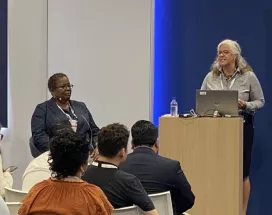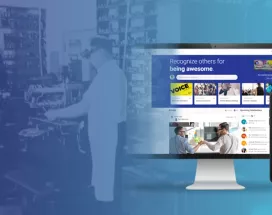Culture

Culture
Learn how AI, workplace shifts, and new skills shape the future of work, fostering innovation, collaboration, and employee growth.
Read more
Culture
Learn how AI, workplace shifts, and new skills shape the future of work, fostering innovation, collaboration, and employee growth.
Read more
Culture
Discover 15 must-have Inspirus features that strengthen workplace culture through recognition, connection, communication and aligned values.

Culture
Stronger workplace culture starts with consistent employee recognition. Explore 15 ways Inspirus Connects helps organizations improve culture through everyday appreciation.

Culture
No two workplace cultures are the same. Learn how Inspirus Connects makes it easy to align your recognition program with the culture you’ve worked hard to build.

Culture
A strong culture starts with recognizing what matters. Learn how to build a values-driven, connected workplace through modern recognition tools.

Culture
Toxic workplaces harm employees and businesses. Find out how to identify and fix a toxic work environment effectively.

Culture
Uncover effective strategies for fostering a culture of recognition in your workplace, ensuring that appreciation becomes a regular practice for employees.

Culture
By Catherine Turner
Investing in employee rewards and recognition is a sound decision for any organization — what gets rewarded gets repeated! By tangibly providing evidence to employees of what you value, you positively impact the future behavior of the employee being rewarded, and their peers.

Culture
By Lesa Blakey
Inspirus recently had the pleasure of attending the 2023 Gartner ReimagineHR conference in Orlando. We were impressed by the excellent speakers and sessions, including our own Theresa Harkins-Schulz, whose session “Harnessing Employee Engagement to Drive Positive Outcomes,” generated rave reviews.

Culture
Alongside these topics, organizational culture is appearing more frequently in news headlines. Amid today’s economic uncertainty, some organizational leaders may be wondering, “Why is organizational culture important?”

Culture
By Kelley Briggs
If you haven’t asked your employees what’s important to them lately, now is the time. We see a critical need for organizations to develop ongoing processes for gathering — and acting on — positive employee feedback immediately.

Culture
By Theresa Harkins-Schulz
Building a workplace community that is supportive and social has the potential for positive impact on both company morale and productivity. Both employees and the organizations they work for benefit.

Culture
By Aspen Christopher
May is Mental Health Awareness Month, an important commemorative event that could, sadly, go on year-round. It’s a movement to raise awareness about mental health — something that both employers and employees are, unfortunately, well aware of these days.

Culture
By Mia Mends
With the recent release of Sodexo's 2017 Global Workplace Trends Report comes a compendium of rich content from one of the world’s largest employers along with global news sources and nearly 50 subject matter experts from renowned academic institutions, associations, consultancies, foundations, NGOs, research groups, think tanks and more.

Culture
By Kelley Briggs
When G W Haltom opened Haltom’s industries in 1893, the company was known as a jewelry manufacturer that made belt buckles, lapel pins, rings, and watches — including some used to mark employees' service anniversaries or reward them for their hard work. Fast forward 130 years and it is unlikely he could have known how impactful his vision was, as Inspirus has now become a leader in employee recognition and employee engagement services. Let’s take a trip down memory lane.

Culture
By Paula Ambrozic
Anyone who’s ever had a job knows how important the relationships between people at work can be. From the caring boss to the helpful coworker, positive relationships can improve our day-to-day experiences, improve employee engagement, and even boost retention. And on the flip side, negative employee relationships (or even those that just aren’t positive enough) can have a dramatic impact on how we feel about our jobs.